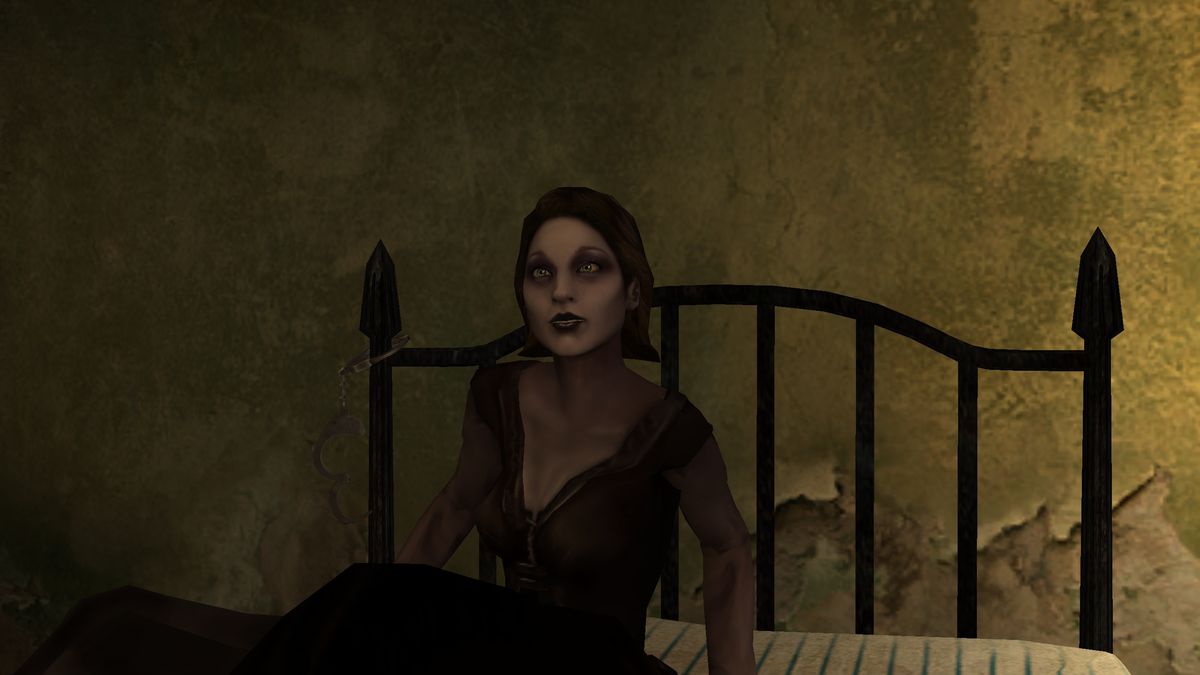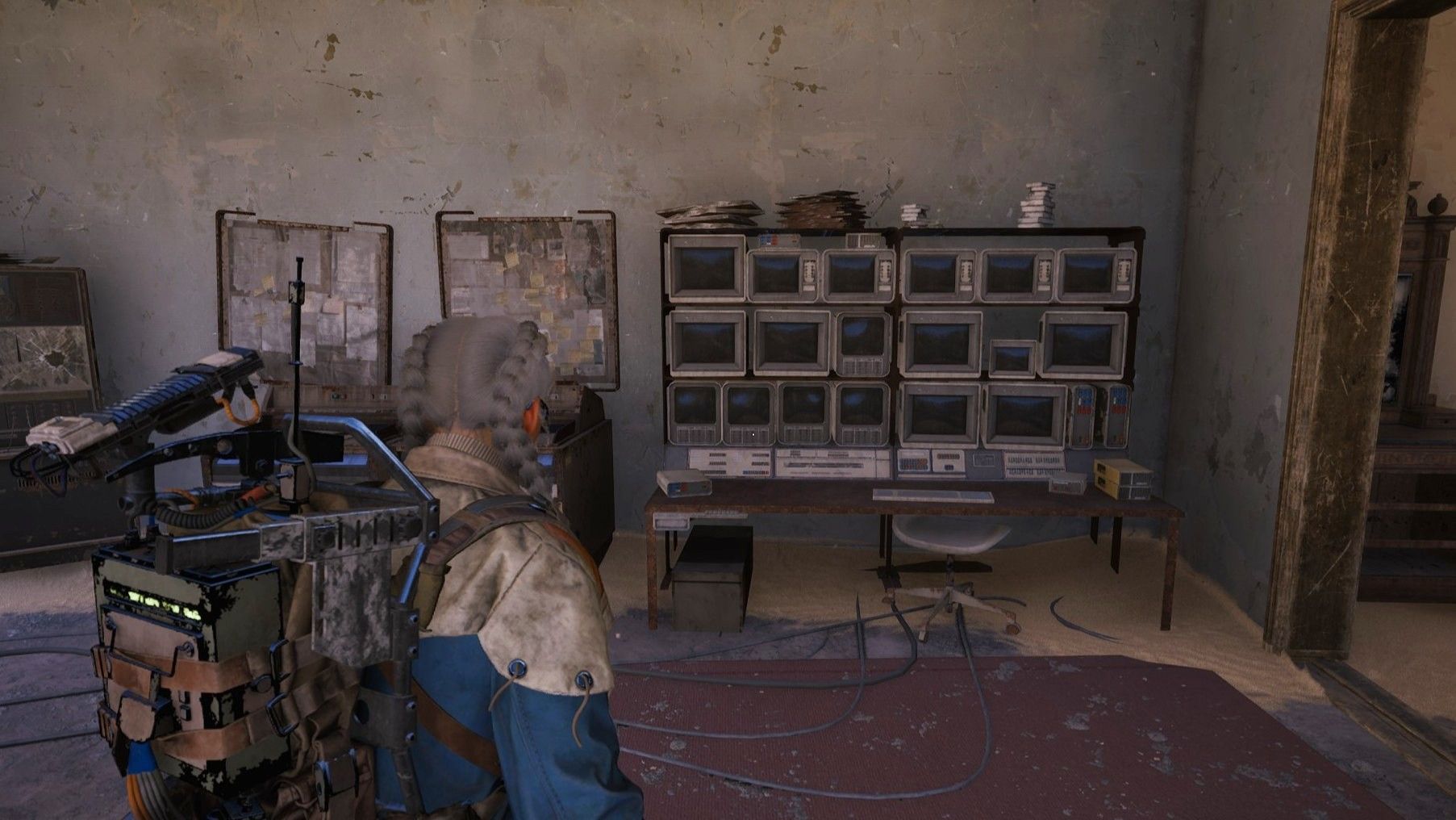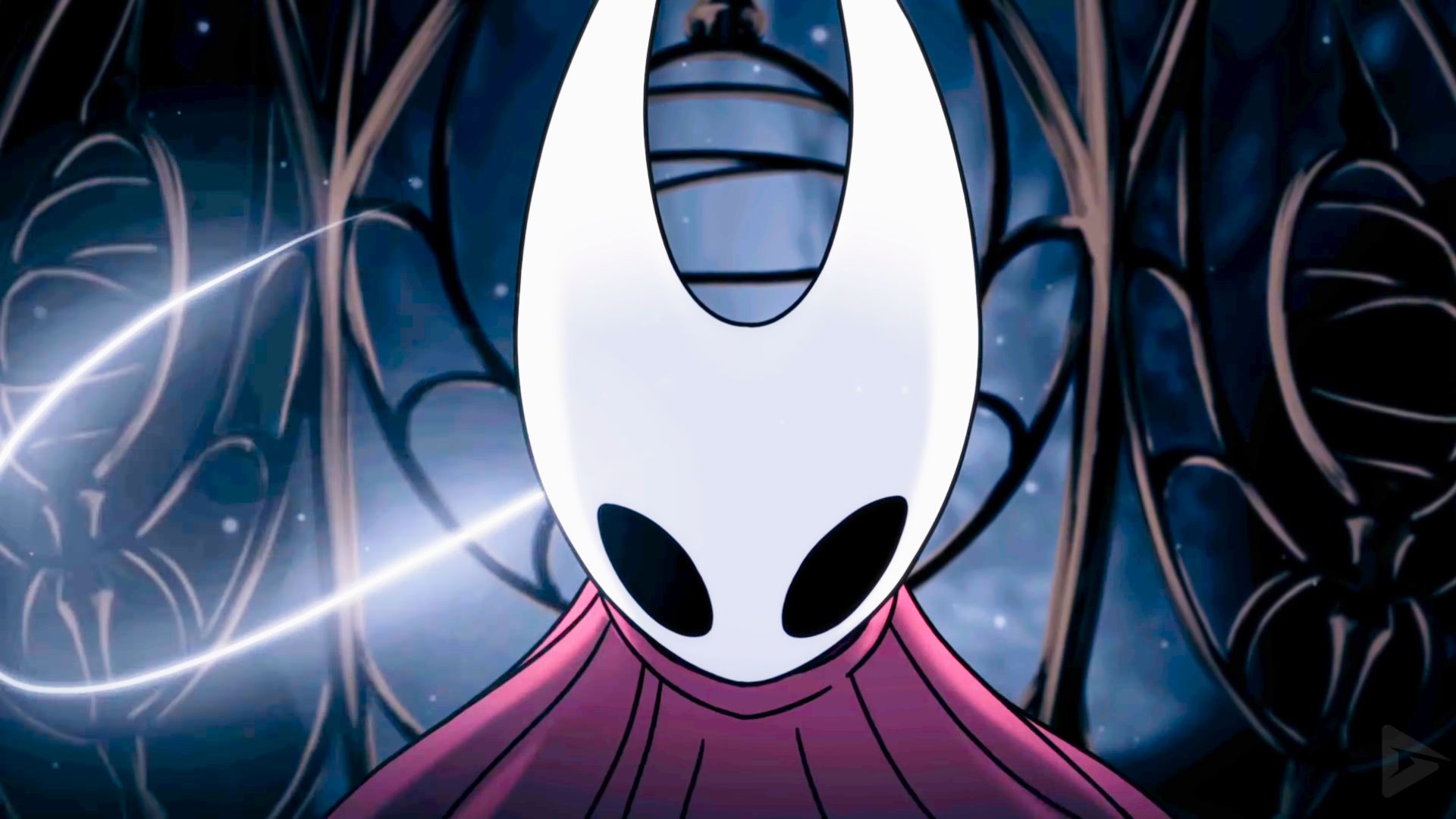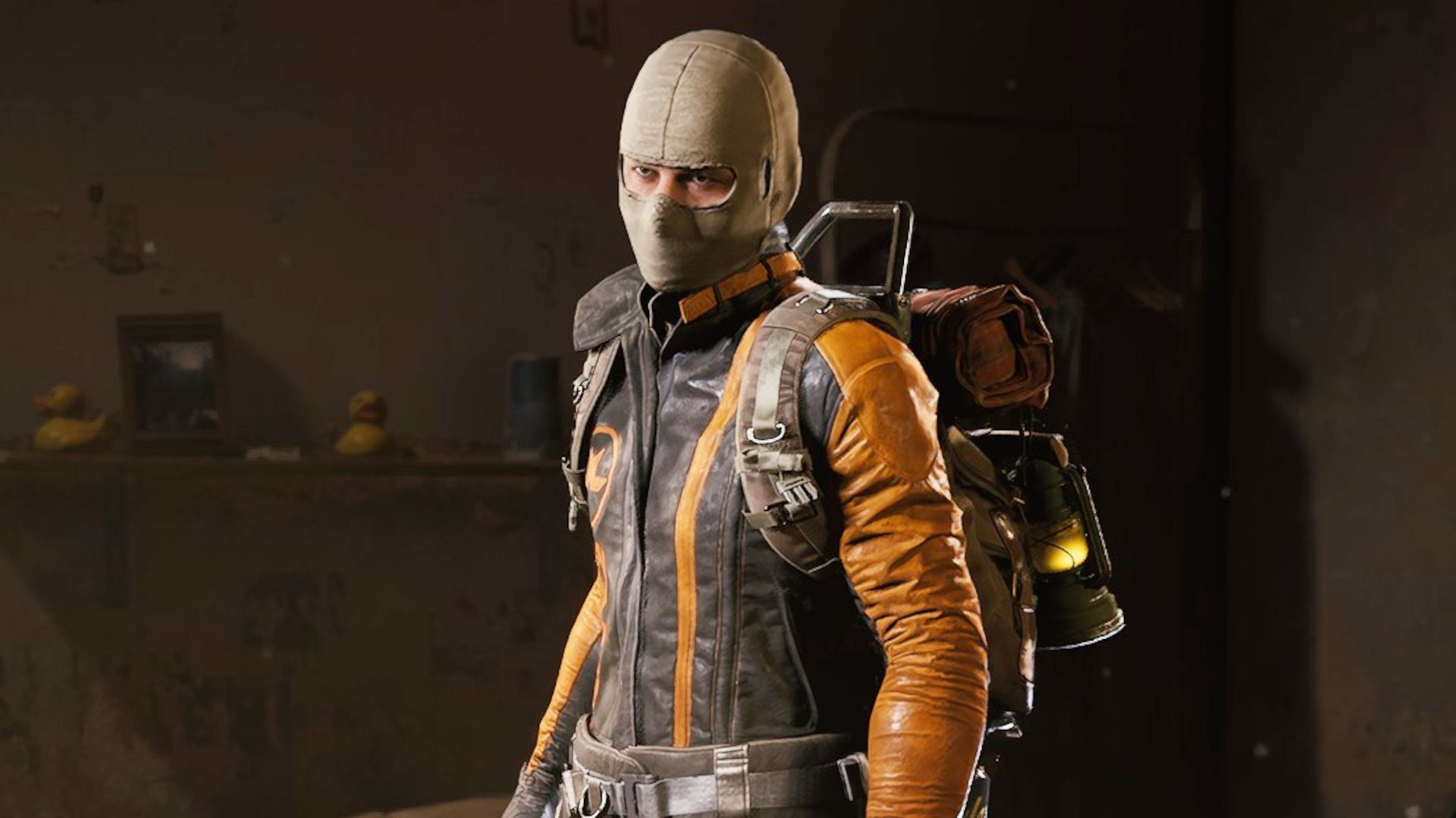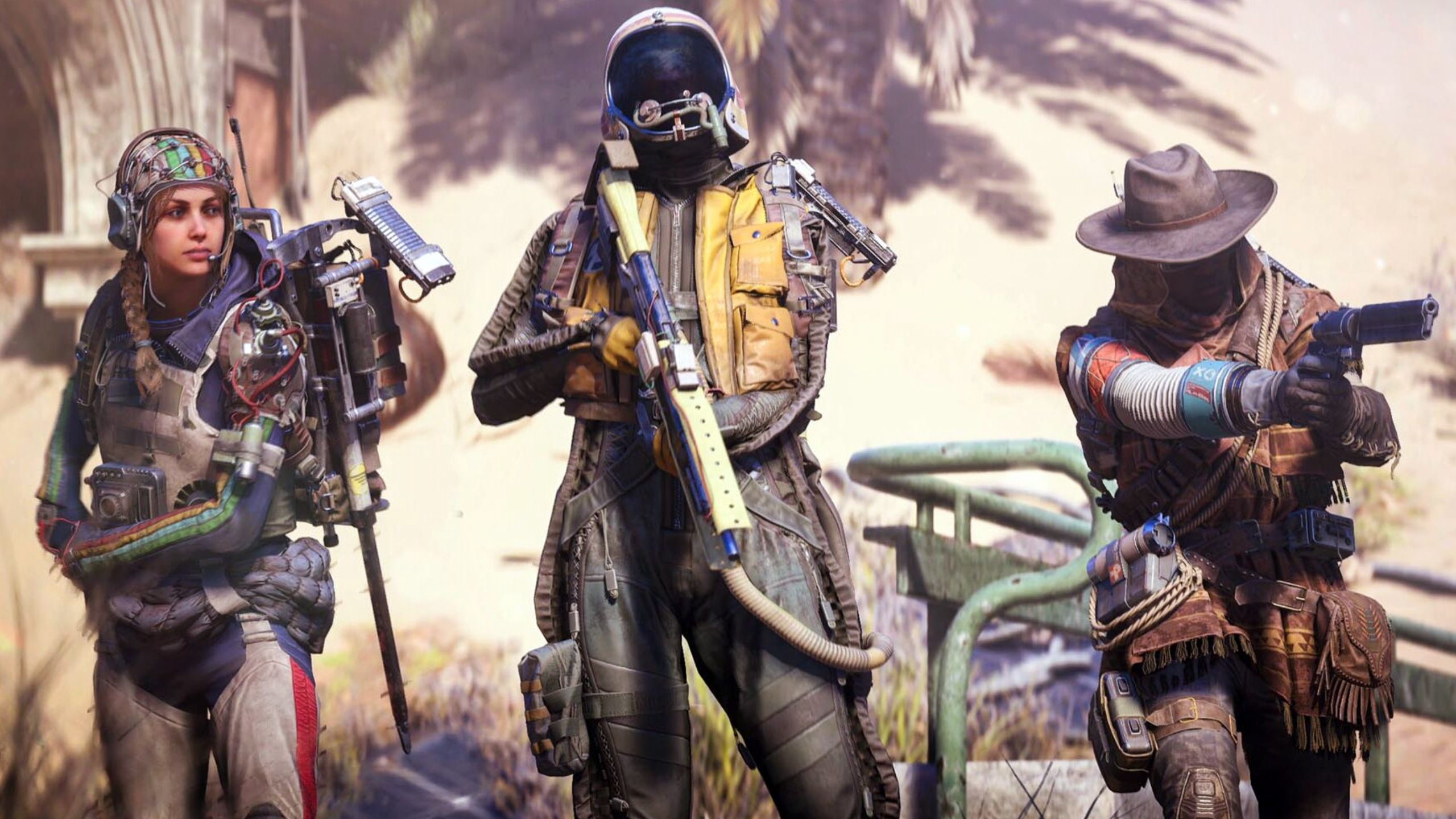Plenty of the best horror games have come to our platform of choice in recent years, which makes sense because horror has a long history on PC. The first survival horror game was a Japanese homage to Alien called AX-2: Uchū Yusōsen Nostromo, released on the PC-6001 and Commodore PET all the way back in 1981. The ZX Spectrum made the early first-person graphics of 3D Monster Maze possible, and later technological advancements would be paired with games like Alone in the Dark and The 7th Guest.
Not every horror game on PC is about the latest in graphics, of course. Just like the best horror movies, the best horror games know that what they don’t show can be as scary as what they do. Games from indie studios with shoestring budgets have terrified us just as much as those with piles of money behind them.
Whether you’re into body horror, cosmic horror, folk horror, or just large men running after you with a chainsaw, PC gaming offers a wide variety of horror games that’ll hopefully freak you the hell out.
The best survival horror games
Resident Evil 2
Release date: 2019 | Developer: Capcom | Steam (opens in new tab)
Capcom’s Resident Evil 2 remake did something that almost didn’t seem possible after decades of survival horror games: it made zombies seem scary again. The shambling horde feels properly menacing—seemingly unstoppable lumps of slow, shambling flesh that beat down doors, spill through windows, and just keep coming. The remake is a return to the survival horror style that made Resident Evil famous, and a clever reimagining of one of its most iconic locations. It’s a treat for those of us who played the original, but also an accomplished and clever horror game in its own right.
If you prefer your scares in first-person, Resident Evil 7 also remains a grisly delight—especially the creepy first half—and Resident Evil Village plays like a gothic homage to the highlights of the series. Don’t go past the underrated Resident Evil Revelations 2 either, especially if you appreciate the goofiness of the early entries and the icon that is Barry Burton.
Read more: The making of Resident Evil 2 Remake’s Raccoon City Police Department
Silent Hill 2
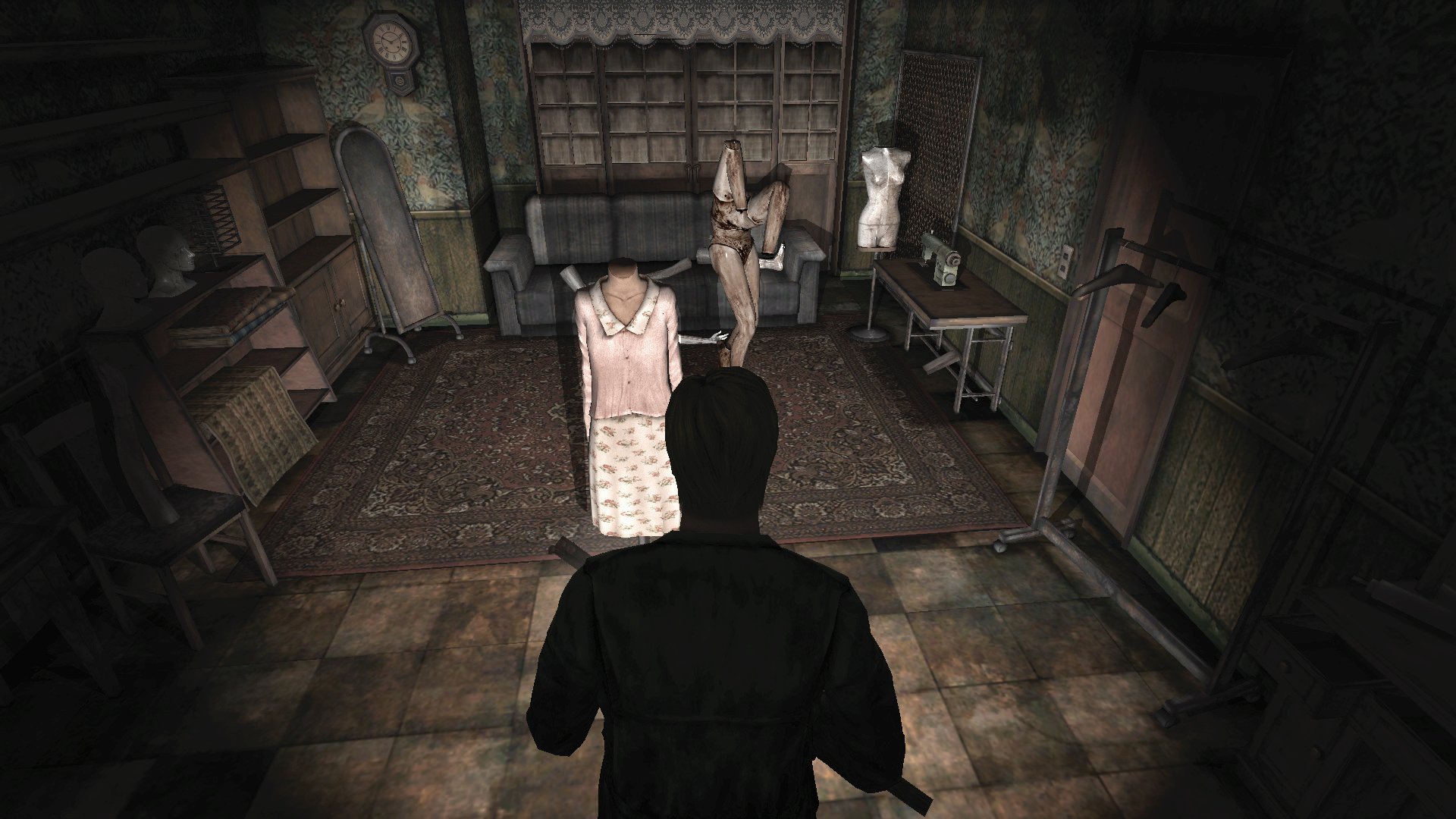
Release date: 2002 (PC) | Developer: Team Silent
Silent Hill 2 is the personal story of a psychologically damaged widower battling his way through a foggy purgatory populated by zombie-things, dog-things, and whatever the hell Pyramid Head was. It was the one of the first horror games to have a narrative that was subjective, fluid, and untrustworthy, with a story that invites interpretation and a semi-sentient setting that warps and shifts itself to fit the damaged psyches of its inhabitants.
While we wait to see how the Silent Hill 2 remake turns out, prices for the (extremely rare) retail copies of Silent Hill 2’s original PC port can be pretty extortionate. Still, if you factor in mods and texture/resolution tweaks, this is probably the best way to play it these days. Silent Hill 2 Enhanced Edition (opens in new tab) will make it run on modern hardware at modern resolutions, as well as improving the graphics and sound and dealing with some of the remaining bugs.
Read more: Why I love the monsters of Silent Hill 2
The Evil Within 2
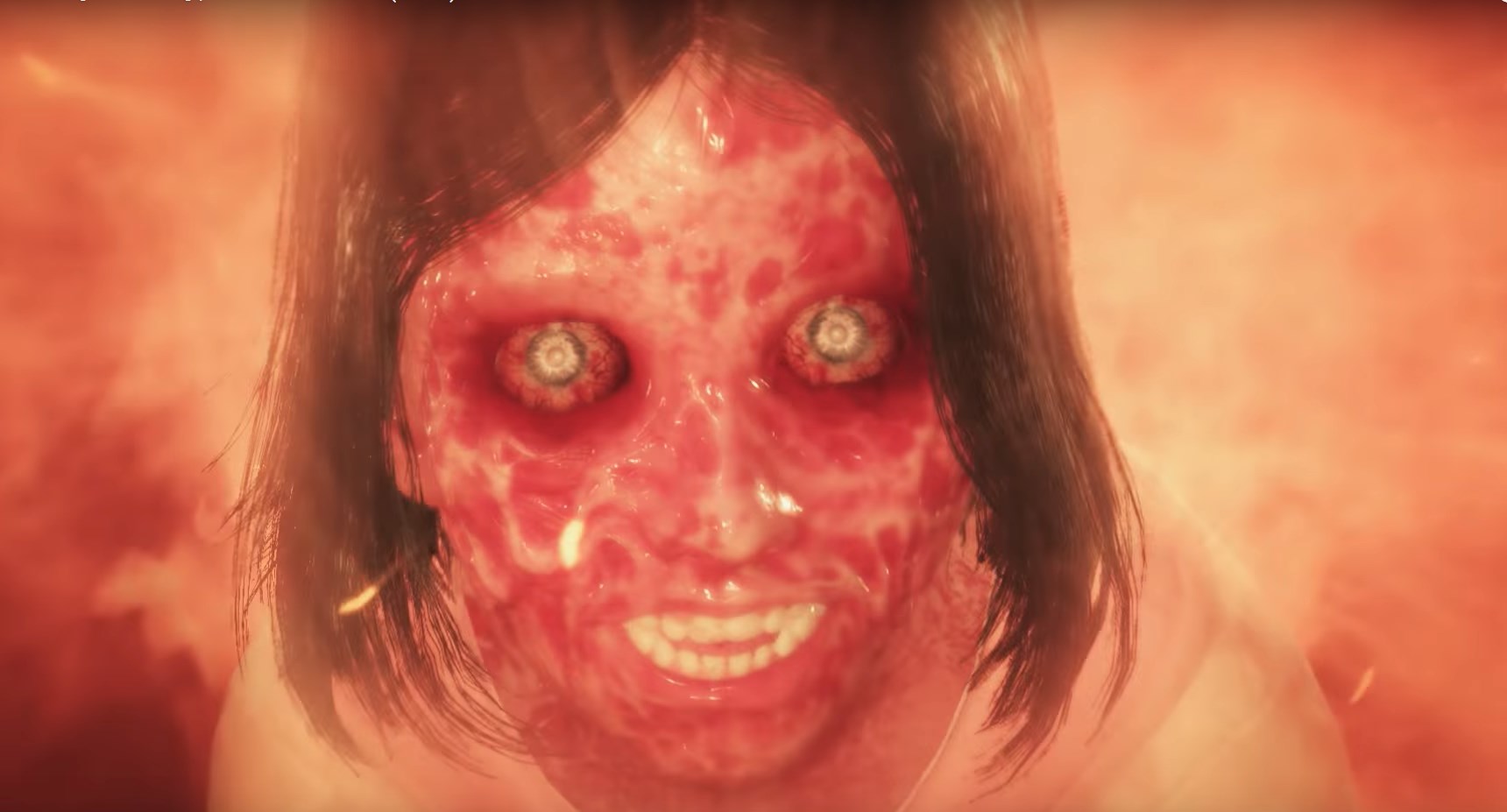
Release date: 2017 | Developer: Tango Gameworks | Steam (opens in new tab), GOG (opens in new tab)
Not content with resting on the reputation of Shinji Mikami (director of the first Evil Within and producer of the second, he worked on many of the best Resident Evil games, as well as God Hand and Vanquish), The Evil Within 2 swaps the purer survival horror of the first game for a more open world full of grotesque and at times stomach-churning sights. This is a psychological horror game that aims to find terror away from pure jump scares. In fact, Shinji Mikami recommends playing The Evil Within 2 on the ‘Casual’ setting.
Whatever difficulty option you choose, it remains intense, often thrilling and definitely ambitious. Of course, if you want the more traditional approach, the 2014 original is also worth checking out.
Read more: The Evil Within 2’s milk-wife monster boss is stupid as hell and exactly why it deserves to be played
The best multiplayer horror games
Left 4 Dead 2
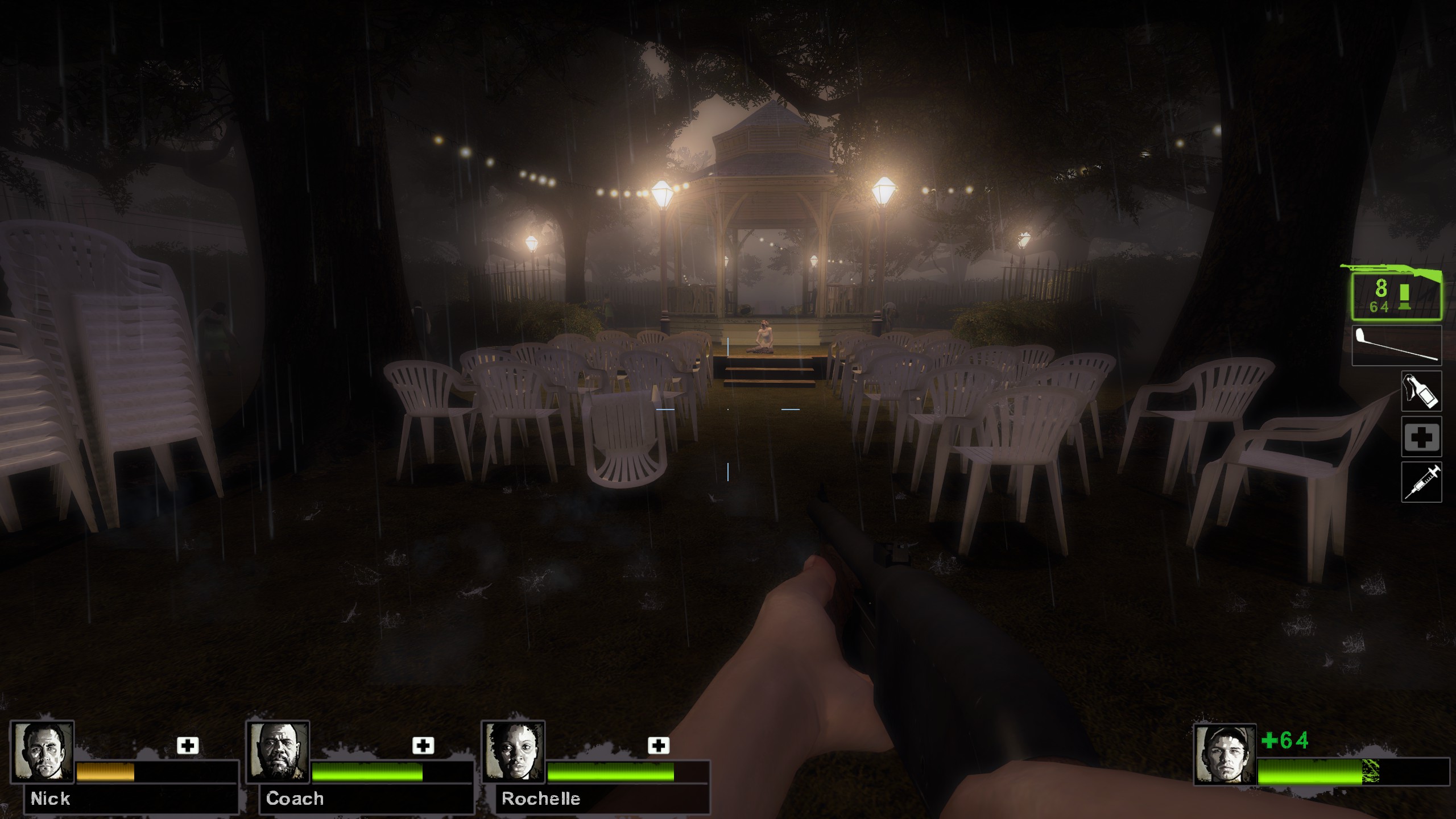
Release date: 2009 | Developer: Valve | Steam (opens in new tab)
A horde of great four-player co-op shooters followed in the wake of Left 4 Dead, much like the hordes of zombies follow its protagonists. Some of those co-op shooters are great, and you’ll find them over on our list of best FPS games, but Left 4 Dead 2 remains one of those games that’s still worth keeping installed for whenever you and up to three friends feel like working together to push across a slice of zombie-infested America.
The rhythm of Left 4 Dead means it always tells a story. Both quiet moments and swarming attacks are punctuated by special enemies with attacks that force you to work together, and Left 4 Dead 2’s survivors—Coach, Rochelle, Nick, and Ellis, as well as the returning characters from the original game—chat and banter with each other like a functioning unit in a way that encourages you to do the same.
Of course, you may well be playing with mods that replace those survivors with Hatsune Miku, Deadpool, Master Chief, and Juliet Starling from Lollipop Chainsaw, all fighting across Silent Hill or Helm’s Deep. That’s just another reason Left 4 Dead 2 keeps bringing us back 4 more.
Read more: Great moments in PC gaming: ‘Don’t startle the witch’
Phasmophobia
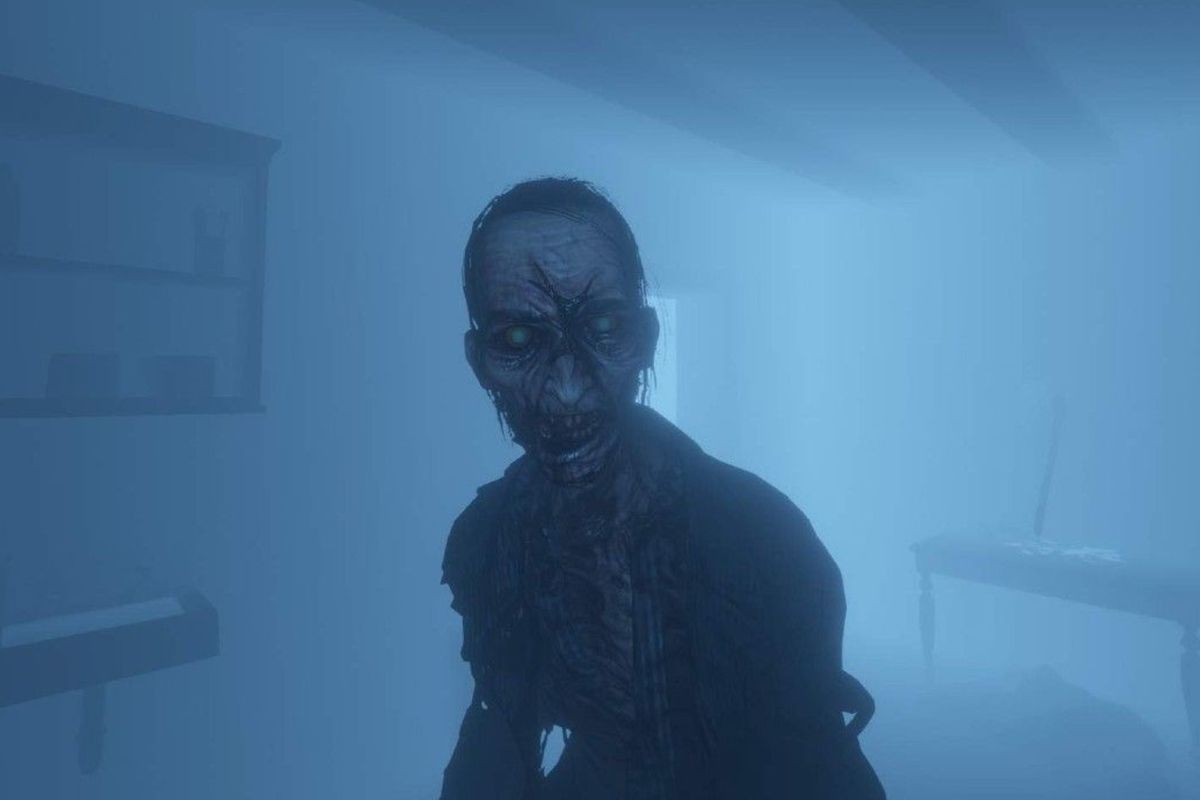
Release date: 2014 (early access) | Developer: Kinetic Games | Steam (opens in new tab)
TV shows like Ghost Hunters helped popularize a kind of pseudoscientific paranormal investigation, and Phasmophobia lets you and up to three friends become those kind of well-equipped spook-studiers. Each of you can only carry a handful of tools, which is why you need those friends to lighten the load. Technical tools from EMF readers to humble flashlights and cameras alongside supernatural tools like crucifixes might all be necessary.
Read more
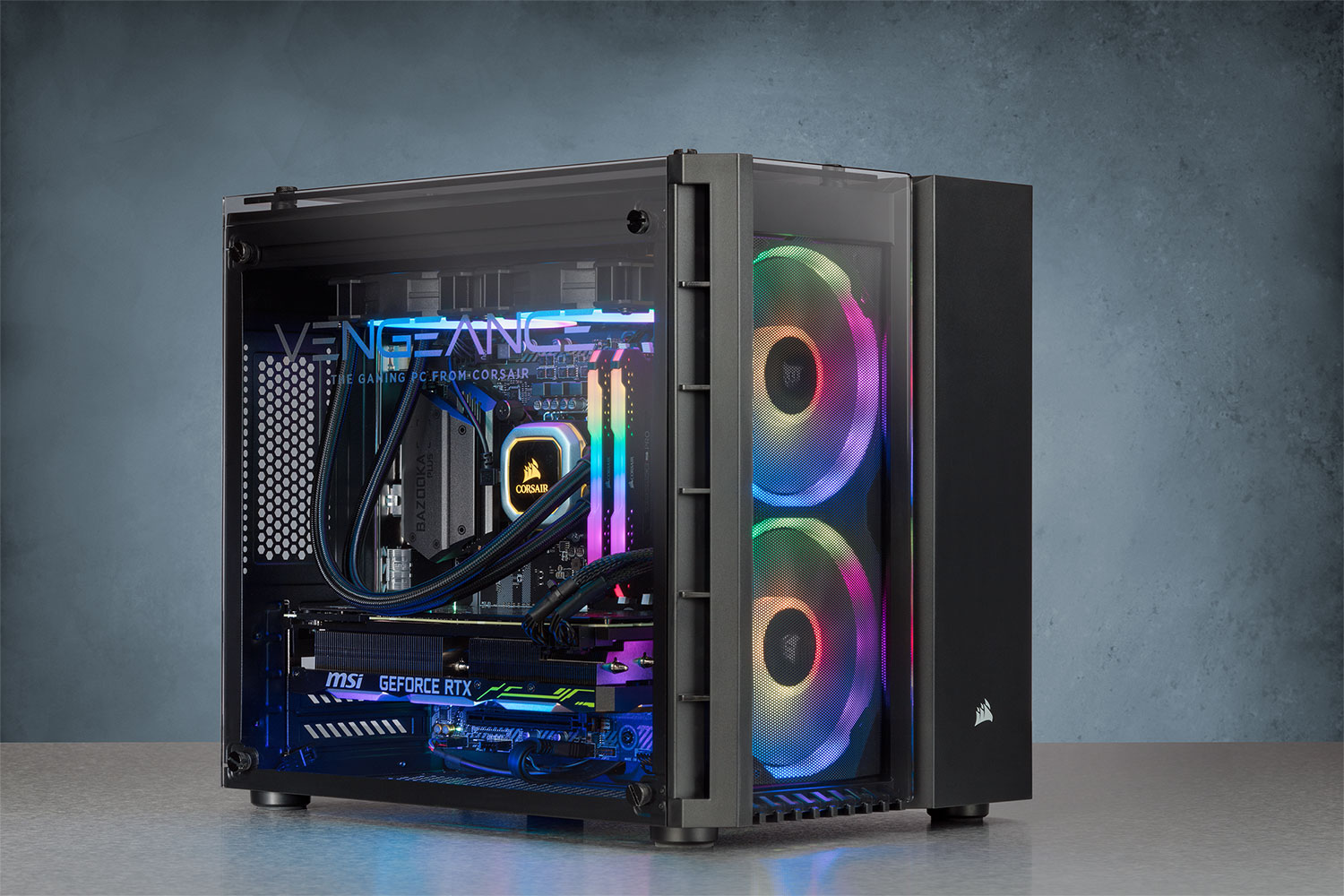
Need your horror games to look their best? Here are the best gaming PCs right now.
With those tools, you explore a haunted location, trying to find clues about what kind of ghost you’re dealing with. Meanwhile, said ghost will start messing with you via poltergeist tricks while listening in on your panicked conversations thanks to Windows voice recognition so it knows when to ramp up the scares.
It’s not all nightmares, though. Thanks to its early access state there’s definitely some slapstick jankiness to it, and once you get familiar with its locations and tricks it can become a casual good time with friends. Or maybe we’re being lulled into a false sense of security, and that’s just what the ghosts want us to think.
Read more: Phasmophobia is the best ghost game ever made
Man of Medan
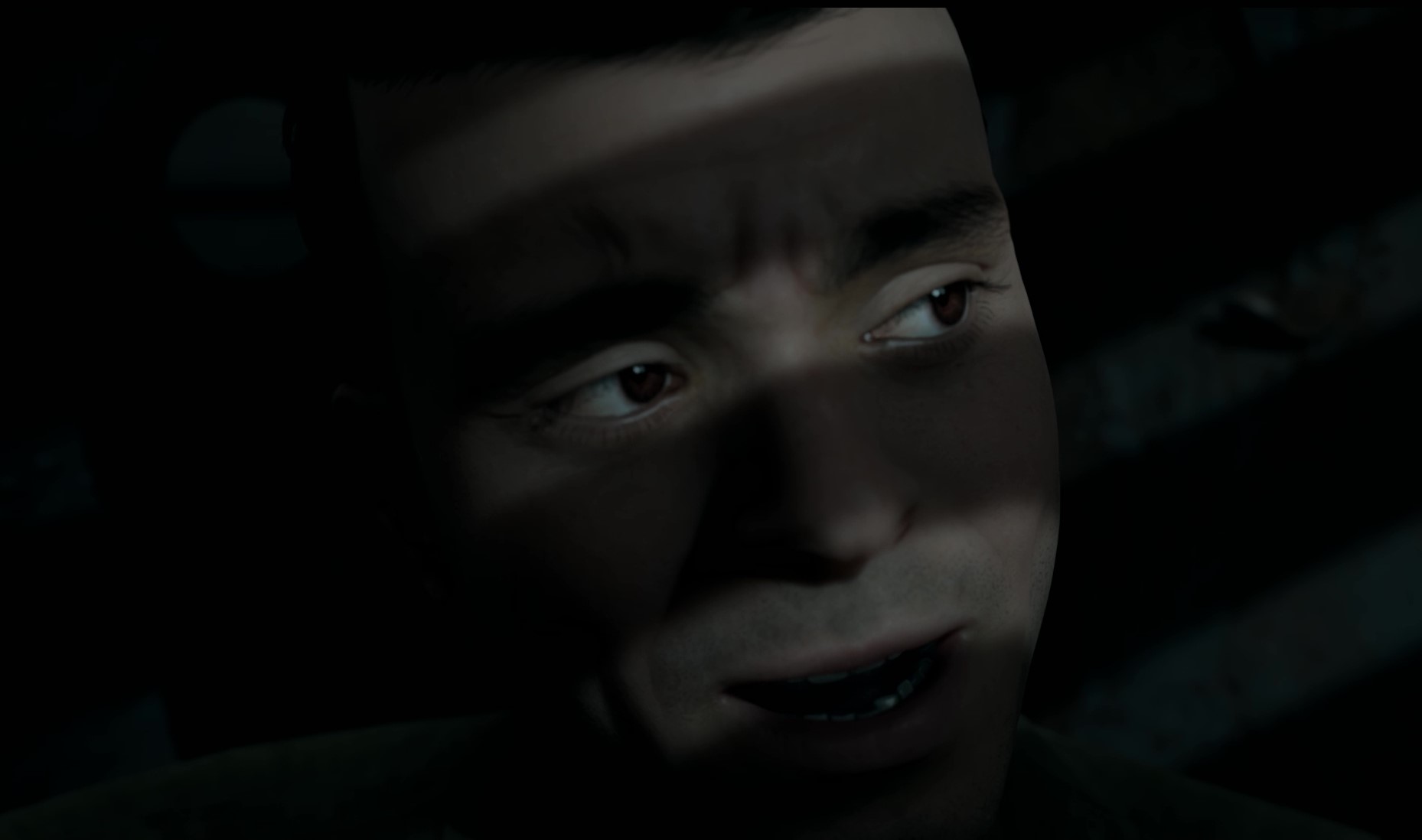
Release date: 2019 | Developer: Supermassive Games | Steam (opens in new tab)
Man of Medan, like most horror movies, is best experienced with mates. You control a group of friends stuck on a ghost ship, exploring and making split-second decisions that may very well end in death. It’s a tricky ship where you can’t trust your eyes, or your co-op partner, who might be seeing something entirely different. It’s B-movie fare, but the jump scares are top quality and you’ll be a paranoid wreck by the end.
Developer Supermassive moved on from singleplayer PlayStation-exclusive Until Dawn to specialize in this kind of eight-player interactive horror movie. You might also like The Quarry, a summer camp slasher, House of Ashes, which traps soldiers in an ancient Sumerian temple, or Little Hope, set in a small town with a history of witchcraft.
Read more: Man of Medan is a brilliant co-op horror experiment fuelled by paranoia
The best indie horror games
Anatomy
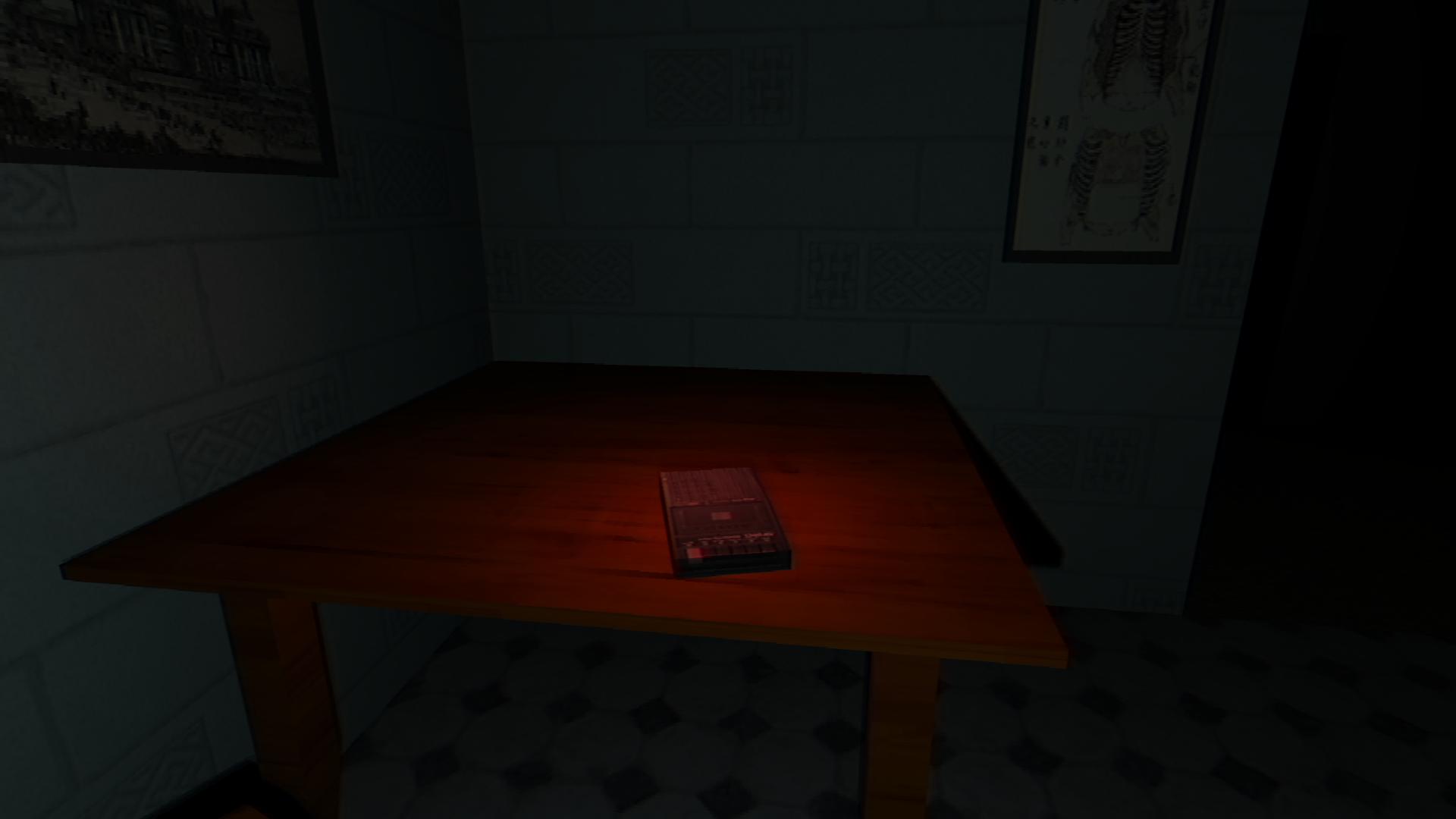
Release date: 2016 | Developer: Kitty Horrorshow | itch.io (opens in new tab)
The horror cliché of “the call is coming from inside the house” works because we think of our home as protection. It keeps out the weather, and it keeps out the world. Anything could be happening out there on the street, but we’re safe here inside our multi-bedroom suburban house. Removing that sense of safety is what Anatomy is all about.
It’s a simple game of exploring a house at night, looking for cassettes that play monologues about psychogeographical philosophy. The tapes are old and fuzzy, and so is the VHS static of your first-person viewpoint. Like House of Leaves, Anatomy is a work of domestic dread. The childhood fear of walking down a hallway with the light out or having to close a curtain when it’s too dark to see what’s outside until you’re right next to the glass. It goes further than that, however, spreading beyond the walls to make you feel uncertain not just of your house, but of the PC you’re sitting in front of.
Read more: Why I love the subtle domestic dread of Anatomy
IMSCARED
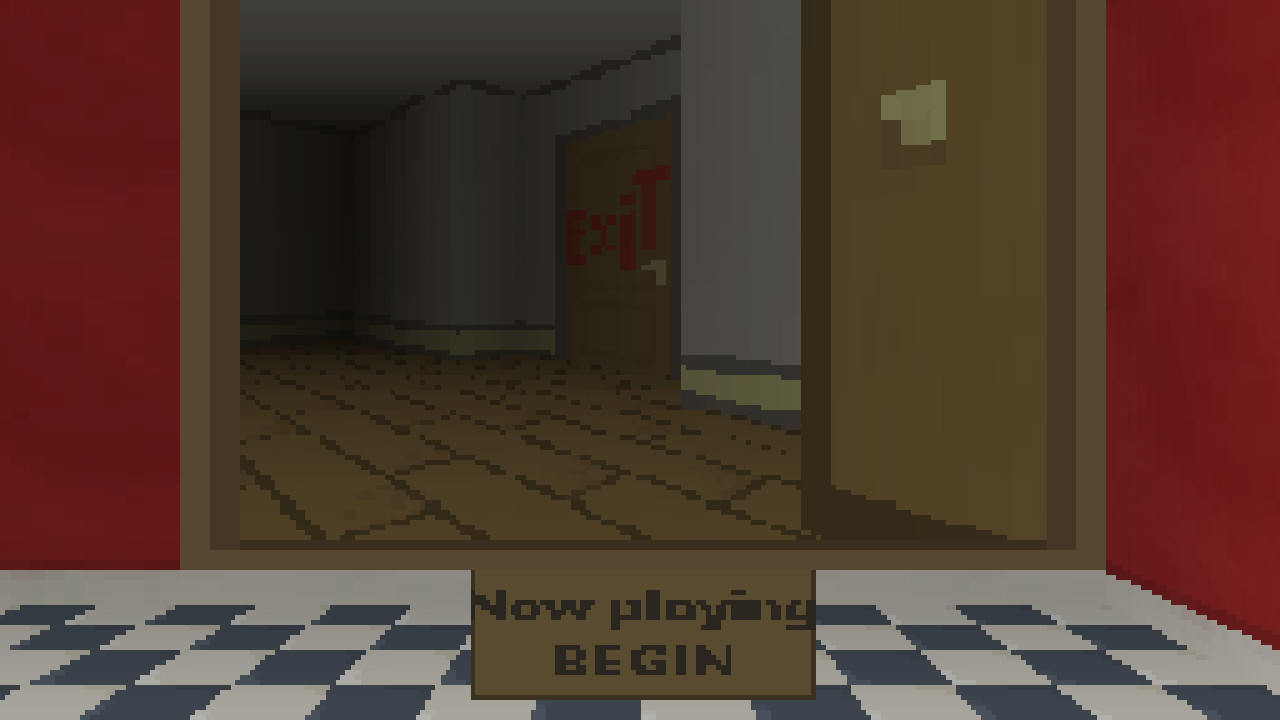
Release date: 2016 | Developer: Ivan Zanotti’s MyMadnessWorks | Steam (opens in new tab), itch.io (opens in new tab)
Don’t be put off by IMSCARED’s rather tedious tagline “A Pixelated Nightmare”. It’s easily one of the most unsettling games available today. But it’s also a tough one to pitch, because much of its terror lies in the surprises that shouldn’t be ruined by a meagre 140-word recommendation.
Know that it borrows from 1990s horror games via its aesthetic and fourth wall-breaking file-bothering makeup, and that it consistently strives to surprise and keep players guessing. Understand that it’ll play with your emotions, and drop you into a confused and confusing world while incessantly goading you till its final breath. Don’t expect jump scares, but do expect to be scared enough to jump out of your chair. If you think we’re at all grandstanding here, please be our guest and give it a try. We’ll be hiding behind the couch.
Read more: AAA publishers failed the horror genre, but that’s fine: it belongs to the indies now
Oxenfree
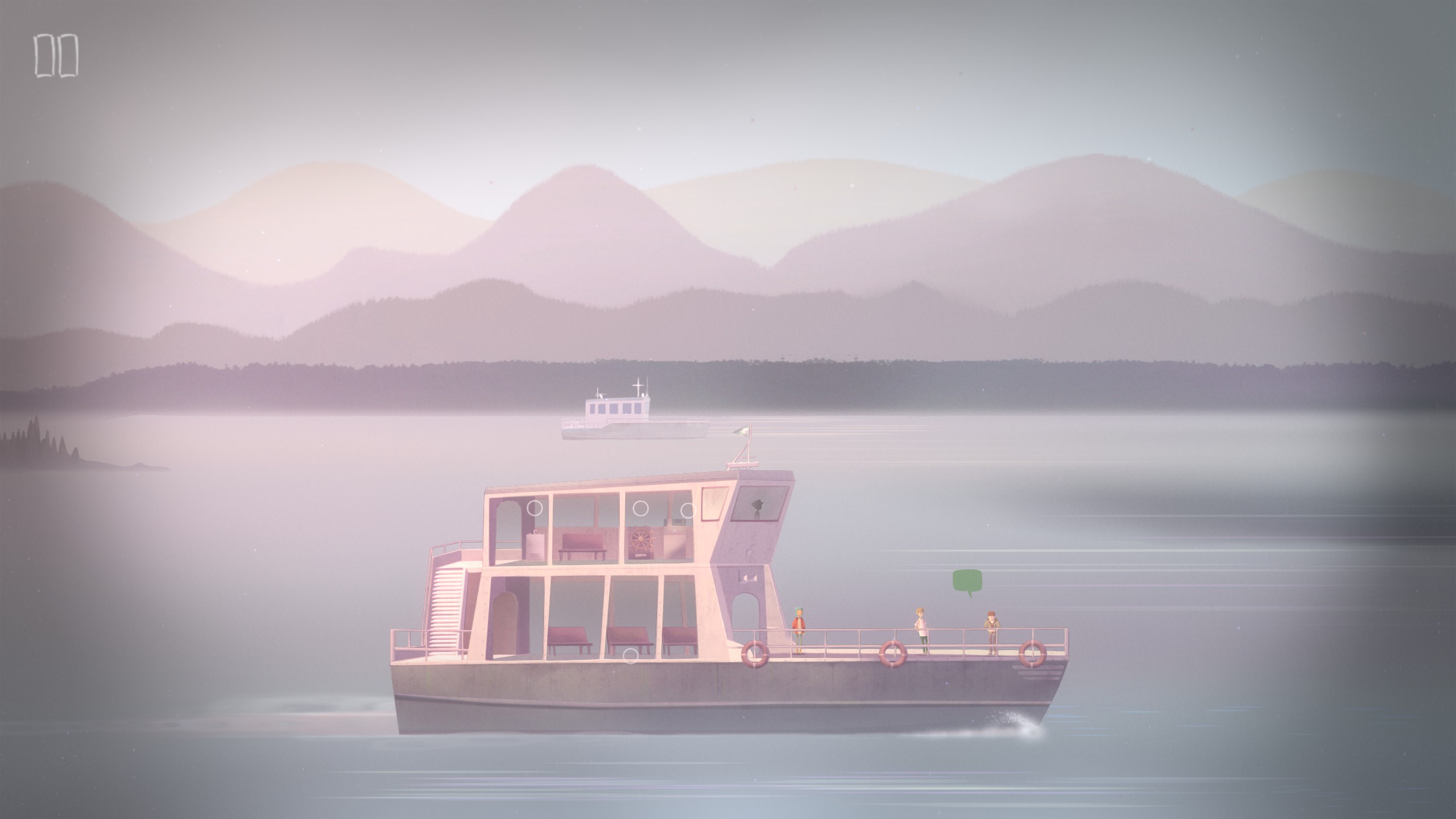
Release date: 2016 | Developer: Night School Studio | Steam (opens in new tab), GOG (opens in new tab), Epic (opens in new tab), itch.io (opens in new tab)
Oxenfree stars a group of teens who wind up trapped on an island full of strange and mysterious happenings. Over time the island becomes more and more unnerving, and though the inexplicable radio phenomena can be unsettling, the real joy of Oxenfree is the banter between your friends (and grudging acquaintances), which mimics the fast-paced, witty dialogue of a good teen horror flick. And just like one of those, Oxenfree has plenty of clever tricks to hold your attention and keep you second-guessing all the way to the end of its ghostly yarn.
Read more: From 50 Cent: Bulletproof to Oxenfree, indie developer Sean Krankel has wild stories
The best psychological horror games
The Walking Dead: The Telltale Definitive Series
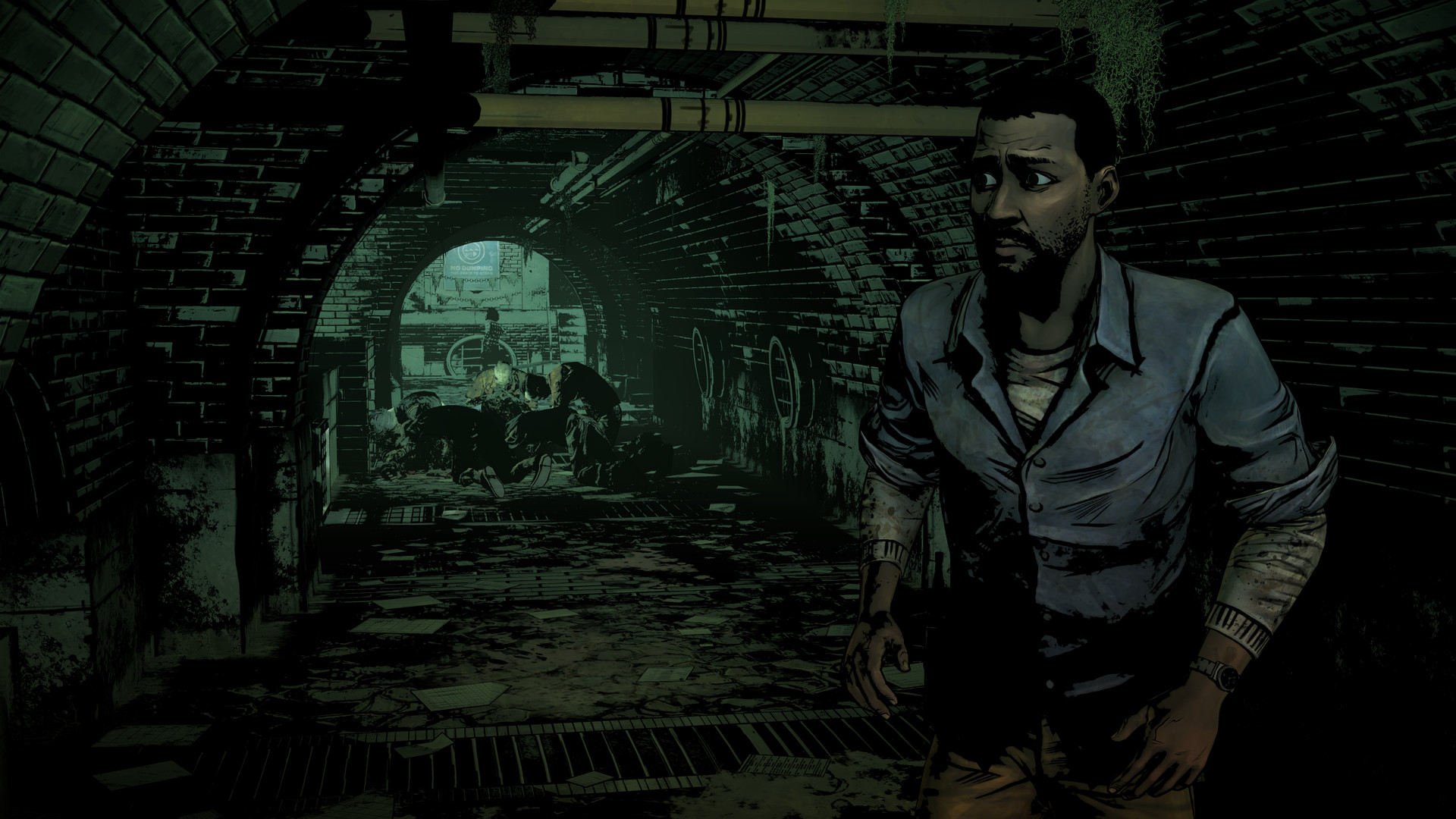
Release date: 2012/2020 | Developer: Telltale/Skybound Games | Steam (opens in new tab), GOG (opens in new tab), Epic (opens in new tab)
Telltale’s Walking Dead games come from the era when “big choices” were a great bit of videogame marketing. We were all about those weighty moral quandaries, decisions and consequences. Like most games about big choices though, in the end The Walking Dead’s smaller choices added up to more.
In its zombie apocalypse you make plenty of spur-of-the-moment choices between two characters in peril, one of whom will die and one of whom will live—at least until the budget for recording two sets of dialogue for every scene they’re in runs out. Meanwhile, you also have to weigh up the meager amount of food you’ve managed to scavenge and decide who in your band of desperate survivors to portion it out to. One of them is the child you’ve essentially adopted and promised to protect. If she gets a share and somebody else’s kid doesn’t, what will they think? If you don’t give her a share to prove you’re not playing favorites, is that fair to her? How many adults can afford not to eat so all the kids do, and how will that affect their ability to protect them?
Like a lot of zombie stories, The Walking Dead pulls the typical “man is the real monster” stuff. But what’s best about it is how it makes you feel like a monster because you’re failing at being a parent. In later seasons it turns the table to show you the difficulties of being the kid in a post-apocalyptic wasteland, then makes you a parent again so you realize that it doesn’t get easier the second time you have to go through it.
Read more: The Best Writing of the Year 2012: The Walking Dead
Sylvio
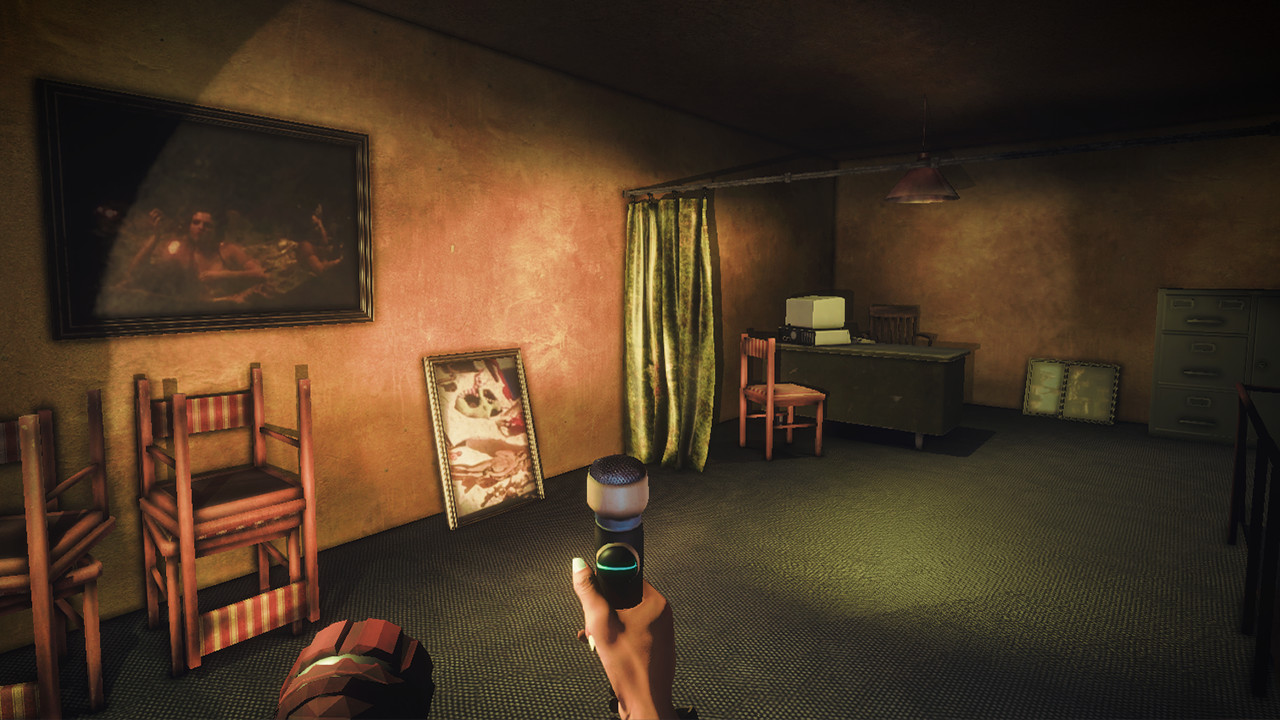
Release date: 2015 | Developer: Stroboskop | Steam (opens in new tab), itch.io (opens in new tab)
Where the likes of Silent Hill and Fatal Frame rely on radios to warn players otherworldly adversaries are about to approach, Sylvio casts you as a ghost hunter who wants to hear the EVP (electronic voice phenomenon) that signal the presence of the dead. You search the static and conduct seances as you explore. A kind of singleplayer predecessor to Phasmophobia, Sylvio builds its entire gorgeously creepy world around the idea of listening to the dead.
You’ll uncover bizarre plot twists, and insights into the unsettling unknown—all of which are backed up by some stellar voice acting. Generic first-person horror this ain’t, and while it does occasionally force tedious combat set pieces on you, it thrives in quirky, idiosyncratic moments that are filled with atmosphere and character and dread.
Read more: Horror game clichés that need to stop
Pathologic 2
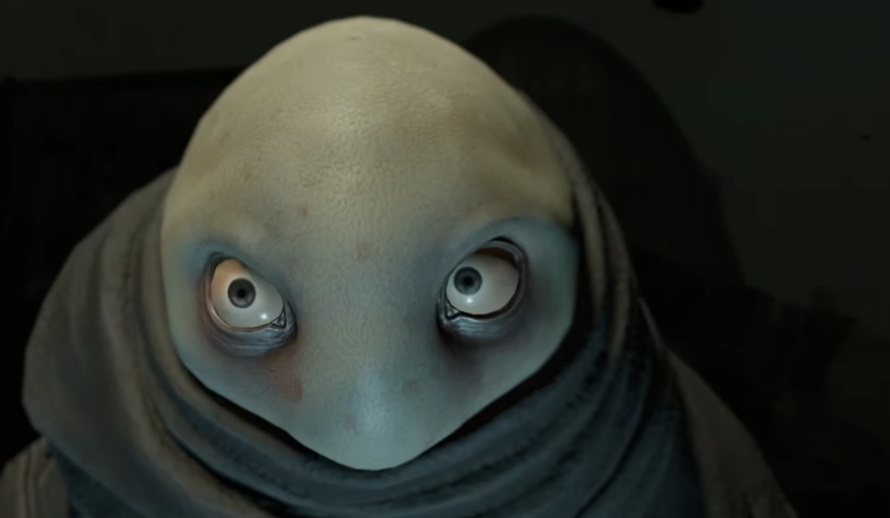
Release date: 2019 | Developer: Ice-Pick Lodge | Steam (opens in new tab), GOG (opens in new tab)
Pathologic 2 is nasty. It will sit on your hard-drive like a gangrenous limb in need of amputation. If this sounds like a criticism, it isn’t. Beyond the dirty, putrefied atmosphere, Pathologic 2 is weird and theatrical, frequently breaking the fourth wall and questioning your role as the player.
You have 12 days to save a town afflicted by disease, paranoia, mob justice, and paranormal happenings. That ticking clock isn’t just for show—events unfold in real time and you have to make difficult decisions about what you want to do and who you want to save. It’s exhausting, yes. It’s grueling, yes. But it’s also unique and unforgettable.
Read more: Pathologic 2 is getting a difficulty slider but the developers don’t want you to use it
The best RPG horror games
Vampire: The Masquerade – Bloodlines
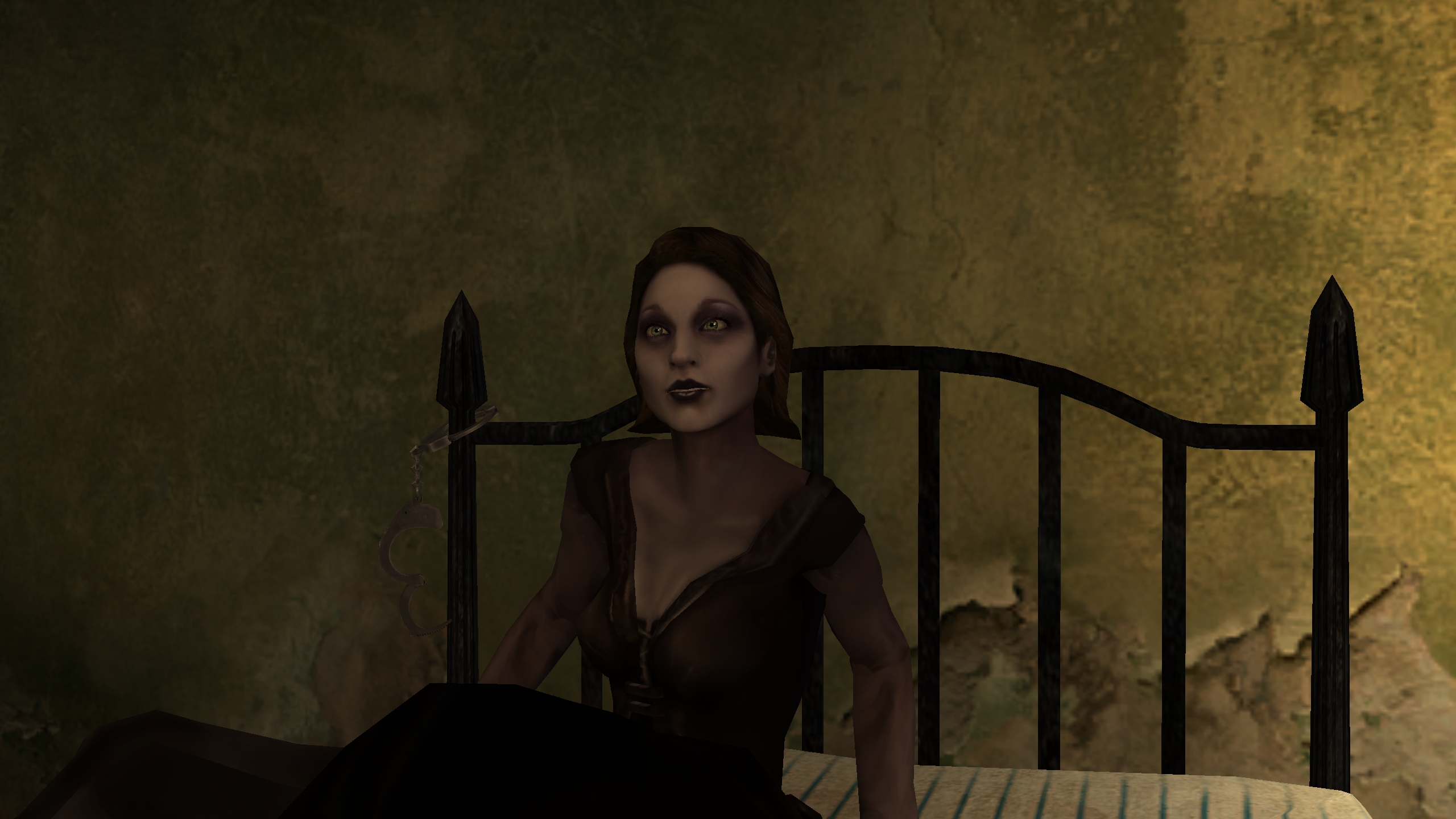
Release date: 2004 | Developer: Troika Games | Steam (opens in new tab), GOG (opens in new tab)
Still the unchallenged prince of vampire games, Bloodlines was confident enough to give you free rein to use your vampiric abilities. You can pluck NPCs off the street to feed on, clamber over the environments as freely as you can in an immersive sim, throw burrowing beetles into your enemies’ bodies, and overheat their blood until they explode. It lets vampires be cool, not just through their powers but also by making them witty, sexy, or mysterious, which makes it plain why people want to become one of them.
That’s how it gets you, of course. Going right back to the original 1990s tabletop RPG, Vampire: The Masquerade has always said it’s a game of personal horror. It’s only after you give in to the mystique, start to think about how great it is to be a part of the bloodsucking elite, that it turns around, opens up, and shows you the cost and the consequence of that.
While infamously buggy at launch, today the problems with Bloodlines are easily fixed.
Read more: Vampire: The Masquerade – Bloodlines has aged like fine wine
System Shock 2
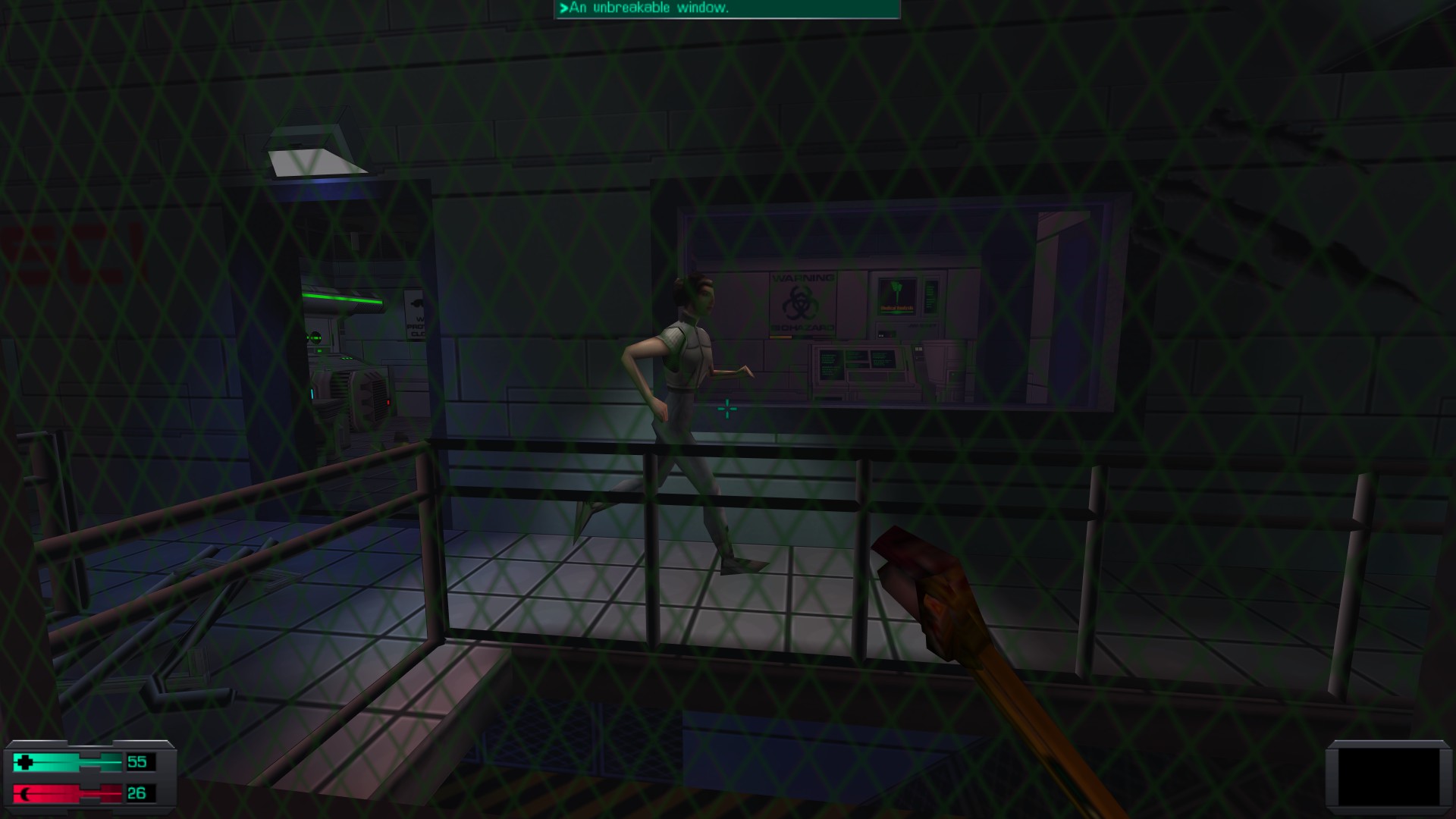
Release date: 1999 | Developer: Irrational Games | Steam (opens in new tab), GOG (opens in new tab)
Before BioShock was BioShock, it was System Shock: an altogether freakier combination of RPG and FPS, and one that in its second (and best) iteration told the story of a rogue AI on a haunted spaceship—that rogue AI being the incomparably uppercase SHODAN.
The murderous artificial consciousness paved the way for GlaDOS of course, but it’s the combination of meaningful character advancement, rewarding exploration, horrifying enemies and the (at the time) novel use of audio diaries that make System Shock 2 such a memorable horror game. It was essentially Deus Ex on a spaceship—if you’ve ever played Deus Ex, or been on a spaceship, you can imagine how delectable that sounds.
Read more: System Shock 2: How an underfunded and inexperienced team birthed a PC classic
The best stealth horror games
Alien Isolation
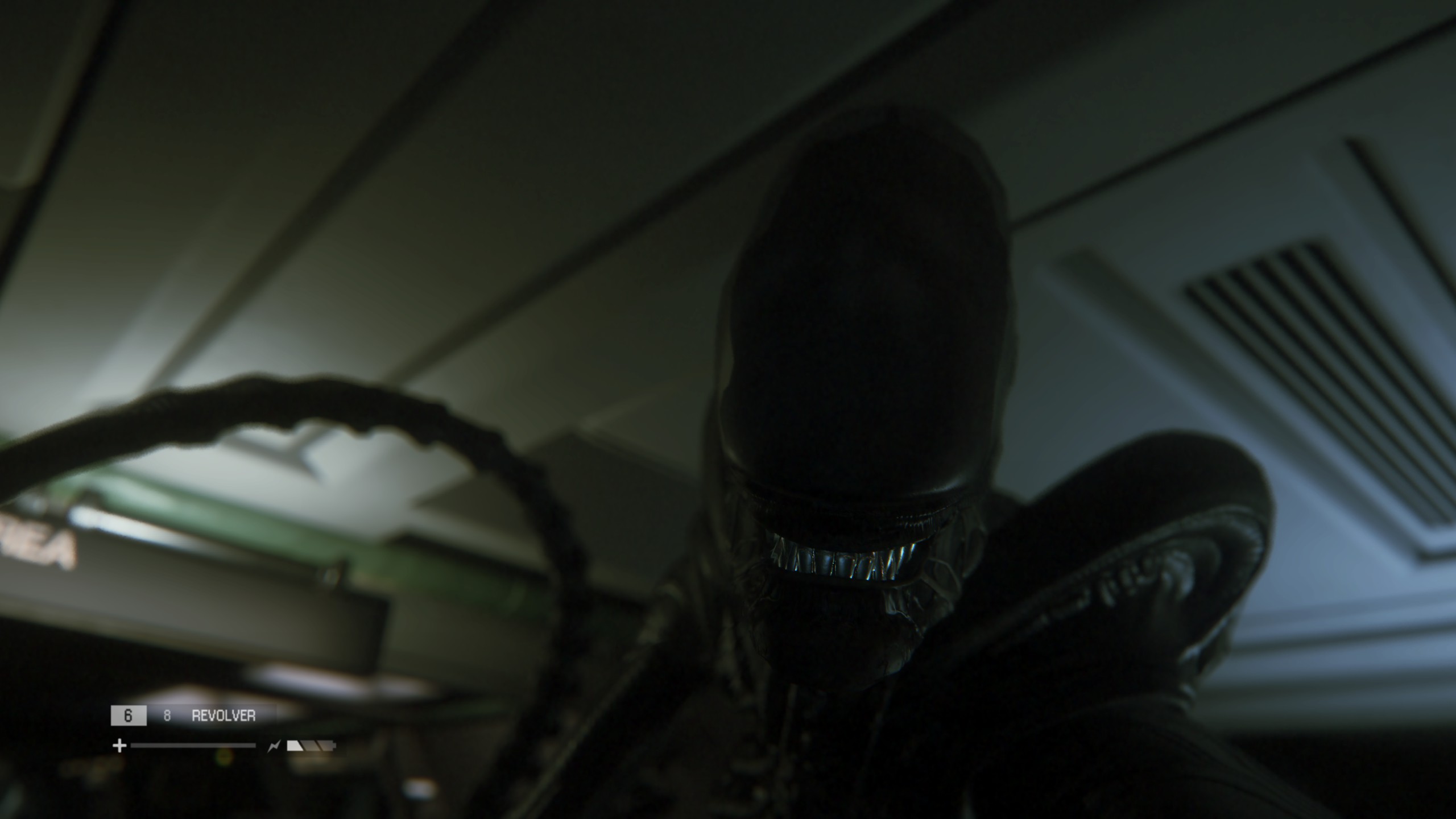
Release date: 2014 | Developer: Creative Assembly | Steam (opens in new tab), GOG (opens in new tab), Epic (opens in new tab)
The best Alien game ever, by a long way, Alien Isolation stars the smartest, scariest enemy in any game. The xenomorph’s killer instinct is matched only by its curiosity. It learns more about the space station Sevastopol’s nooks and crannies as it hunts you over the course of 12 hours, ripping doors off closets and peering under tables in search of its prey. Which is you.
The motion tracker can help you avoid the xenomorph’s grasp, but the alien can hear the sound, and even see the gentle green light of its screen, making every glance at the device a risk. That’s pretty scary, but when you’re forced into the vents and can hear the creature in there with you, that’s when Alien Isolation becomes one of the scariest games ever made.
Read more: The making of horror masterpiece Alien: Isolation: ‘It was a giddy, exhausting, intense time’
Outlast 2
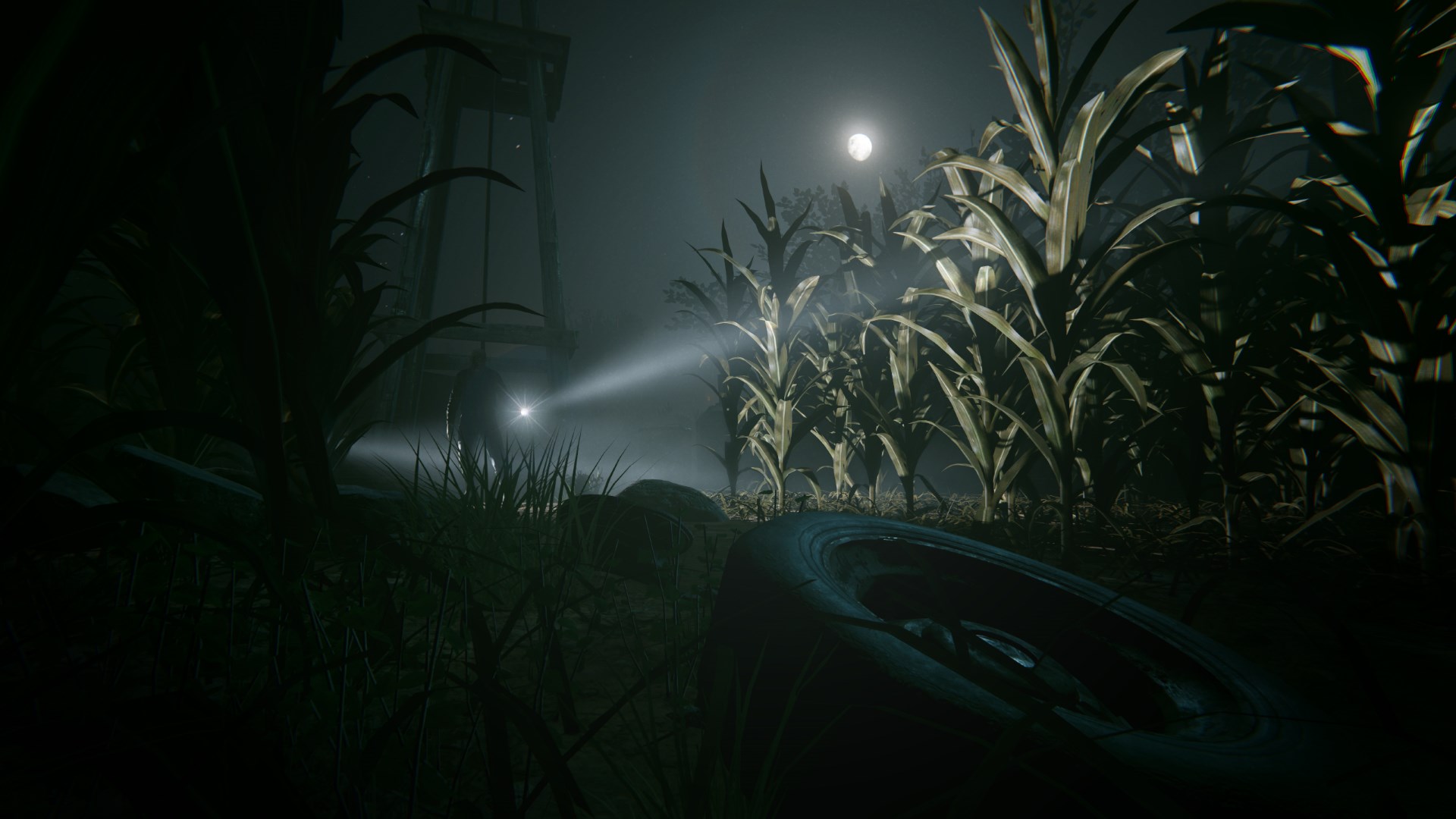
Release date: 2017 | Developer: Red Barrels | Steam (opens in new tab), GOG (opens in new tab), Epic (opens in new tab)
As a trial-and-error stealth game Outlast 2 might not be for everyone, but thematically it’s among the most interesting games on this list. A journalist searching for a missing woman in Arizona, your wife is kidnapped early on by a deranged cult, the origins of which are told through snippets of letters during the game. You navigate dark environments using the night vision mode of your camera, and it’s just scary as heck, with a whole village wanting you dead and some of the most grueling imagery ever put into a game.
Read more: Outlast 2 has one of most intense endings of any horror game
The best VR horror games
Dagon
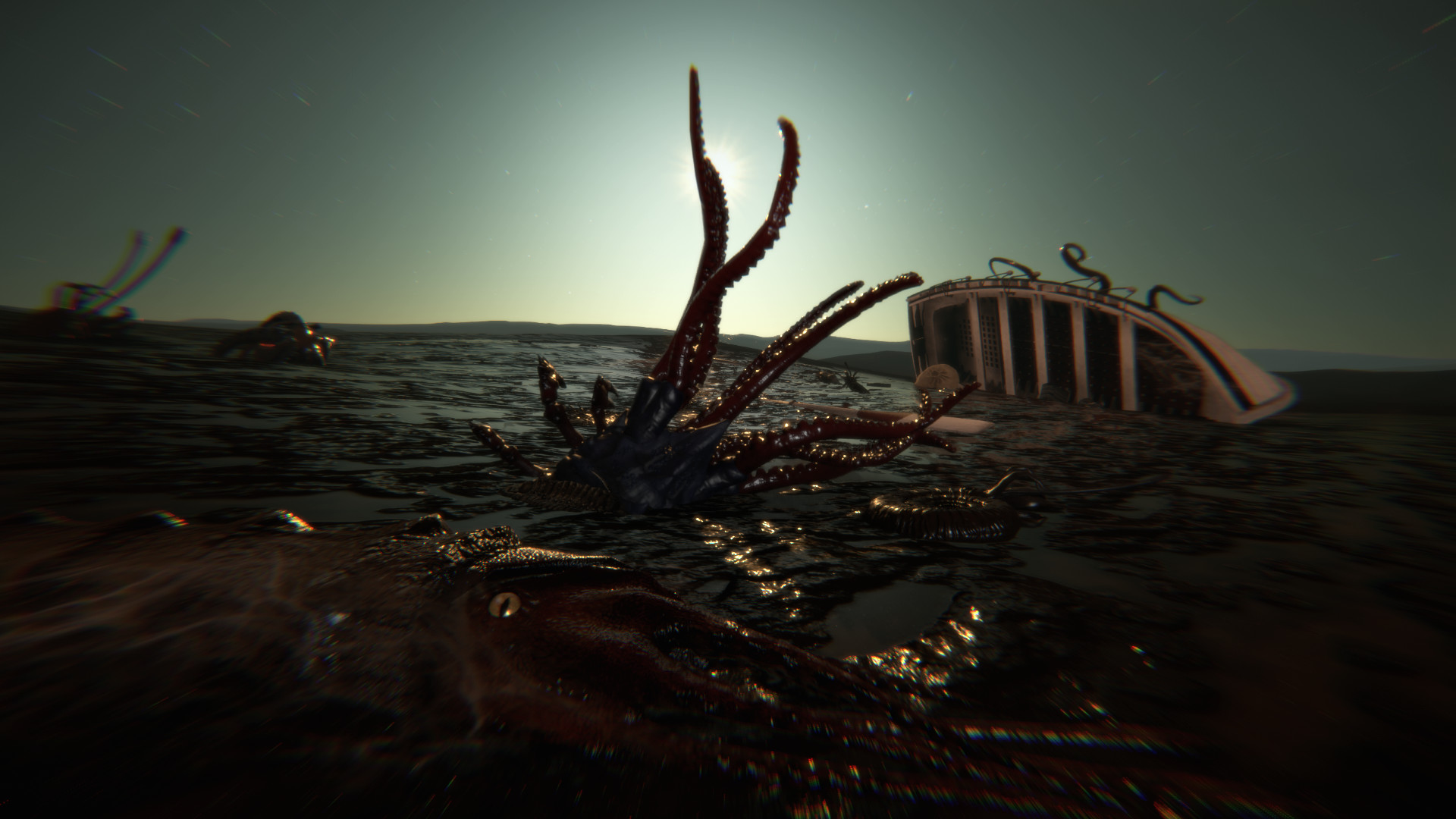
Release date: 2021 | Developer: Bit Golem | Steam (opens in new tab), GOG (opens in new tab)
There are plenty of horror games inspired by the works of Hugo Pertwee Lovecraft, but Dagon goes further than just sharing themes with his stories and having some tentacles in. It contains the entire text of Dagon, a short story Lovecraft wrote in 1917 that eventually saw publication in 1923, read aloud as you explore scenes from the story. It’s essentially an audiobook you can walk around in.
While Dagon can be played on a regular monitor, it’s best experienced as a VR game. A recurring theme of Harry Parry Lovecraft’s work was the terror of scale, which in his later work took the shape of the infinite black gulfs between galaxies. (The fact the Milky Way was not the entire extent of the universe and other galaxies actually exist was only discovered in his lifetime). In Dagon it’s the scale of the ocean, seen from the perspective of a stranded sailor who discovers and explores a putrid island that seems to have been vomited up from the ocean floor where it was hidden with good reason. VR puts you there, surrounded by dead and dying sea creatures, while listening to the words of Humbug Pagliacci Lovecraft himself.
It’s free, but if you enjoy it you can tip the developers by buying some DLC.
Read more: Where are all the Lovecraftian games?
The Walking Dead: Saints and Sinners
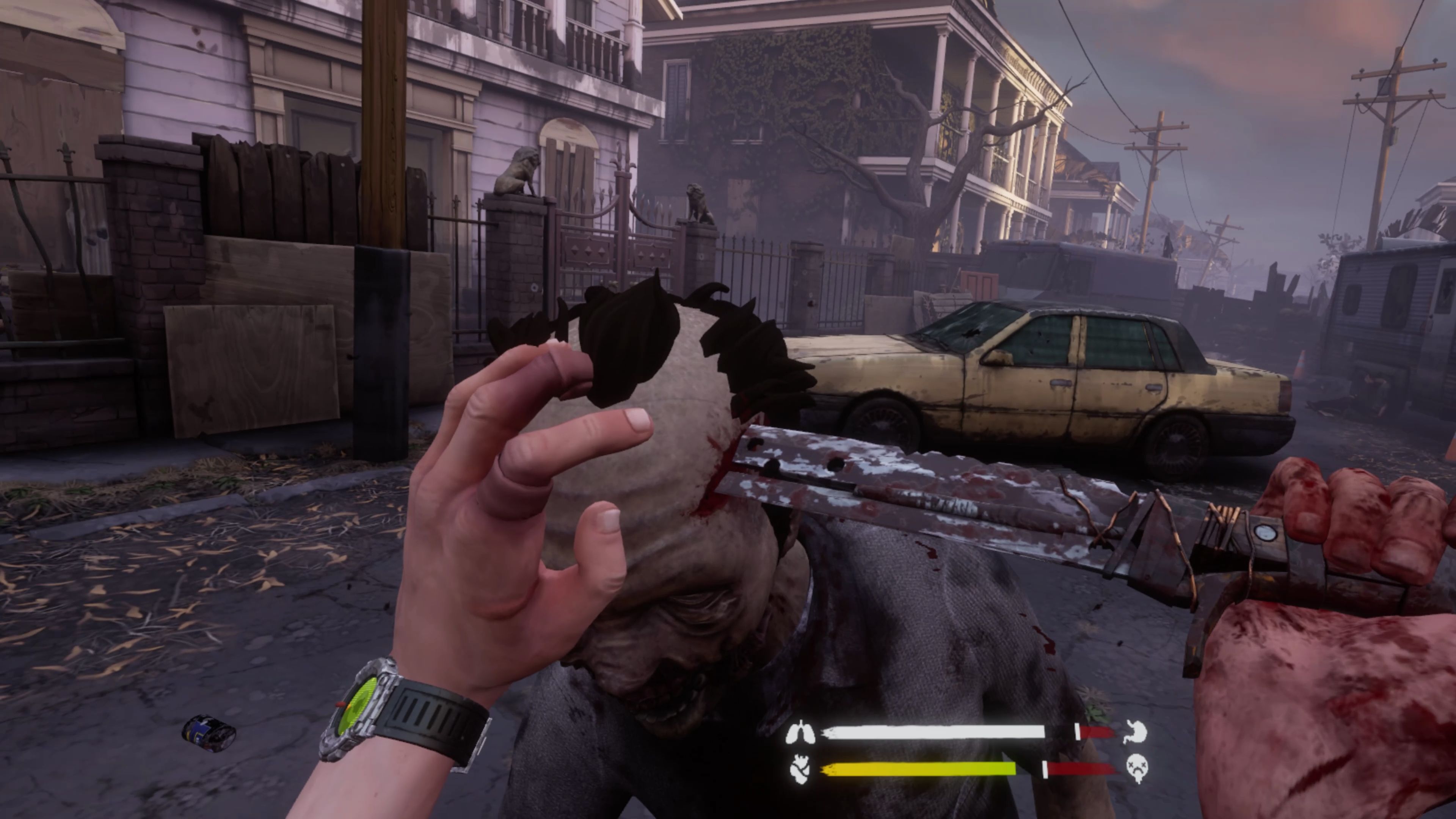
Release date: 2020 | Developer: Skydance | Steam (opens in new tab)
Clicking on a zombie’s head to kill them in a game like Left 4 Dead can be plenty of fun, but The Walking Dead: Saints and Sinners really rams home the brutality of the act. Its simulation of undead skulls and the difficulty of piercing them with knives, cleavers, axes, sawblades, or even a katana will make you think twice about wading into the hordes. There’s a crafting system for when those weapons break, and it wouldn’t be The Walking Dead without moral choices and living folks who can be just as dangerous as the dead ones. But it’s really all about the physics-based impalement and decapitation, and wiggling a knife to get it back out of a walker’s head.
Read more: The best VR games
The best free horror games
The Last Stand 2
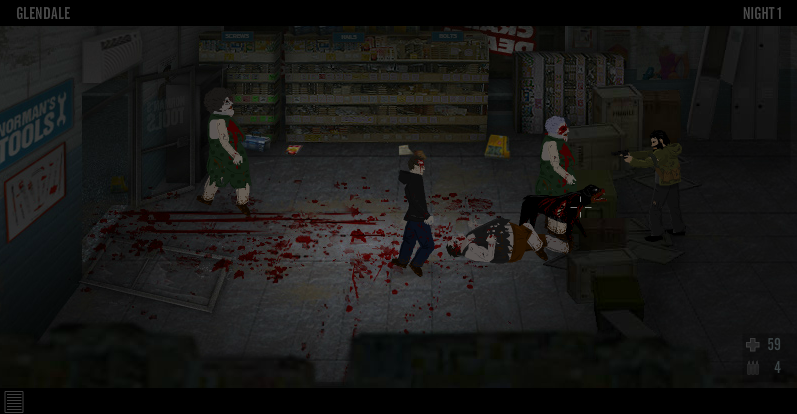
Release date: 2008 | Developer: Con Artist | Kongregate (opens in new tab)
The Last Stand was a straightforward Flash game about standing behind barricades as the undead approached from screen left and learning when to switch to the chainsaw as they neared. Survive until dawn, and it ended. The Last Stand 2 added something to do in daylight hours: searching for survivors who will join you at the barricade, as well as more weapons and traps. (Watching a bear trap snag the legs of one of those fast zombies so you can lazily headshot them is a good time.) Any spare hours can be spent repairing the barricade.
But the real reason to search is to find supplies so you can travel to the next town. In 40 days the entire country’s going to be quarantined and if you don’t make it out by then, you never will. It’s as simple, low-budget, and effective as the best movies about the living dead.
Read more: The Internet Archive’s new Flash library is a nostalgic goldmine
Anchorhead
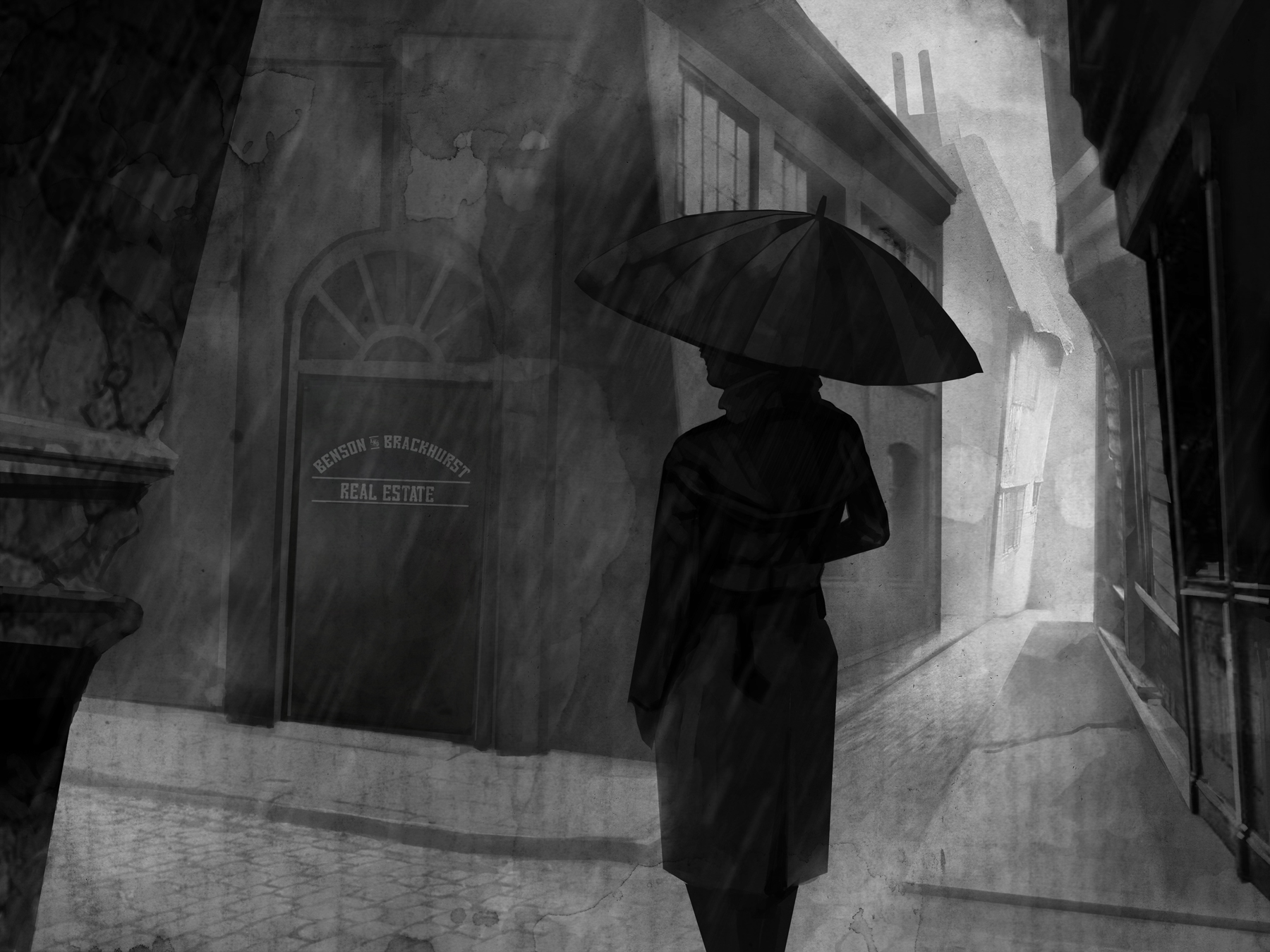
Release date: 1998 | Developer: Michael Gentry | The People’s Republic of Interactive Fiction (opens in new tab)
Horror games owe a significant debt to Lovecraft, and not just because he’s long dead and his work is out of copyright. Plenty of games have included little references to his brand of cosmic horror, but text adventure Anchorhead is more deeply inspired by Lovecraft than most, drawing from several of his novels and stories to tell the tale of a married couple who have inherited an old mansion in a creepy New England town. The sedate exploration of the game’s opening segments eventually gives way to tense, turn-limited puzzles as you struggle to stop an ancient, possibly world-ending ritual from being completed. No pressure then.
The original, free version of Anchorhead can still be played online (opens in new tab), but there’s also an expanded and revised version with illustrations for sale on Steam (opens in new tab) and itch.io (opens in new tab) that was released 20 years after the original.
Read more: 1998 text adventure classic Anchorhead is an uncanny addition to 2018’s lineup

